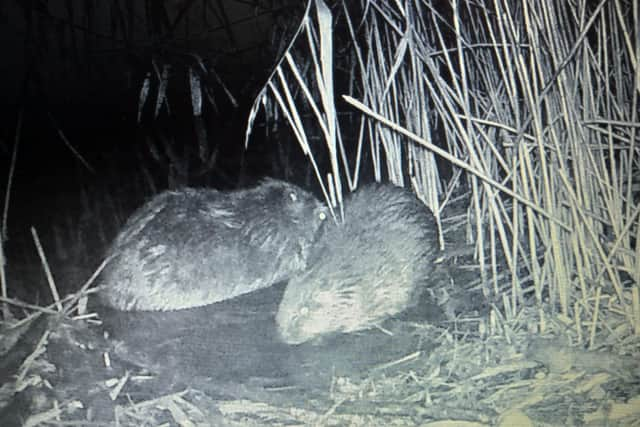Watch: Baby beavers born at Bassetlaw Wildlife Trust nature reserve just 12 months after introduction
and live on Freeview channel 276
A year ago, staff, volunteers and supporters of Nottinghamshire Wildlife Trust celebrated the arrival of eight beavers from Scotland to the Idle Valley Nature Reserve near Retford.
Now there is another to celebrate as baby beavers, known as kits, have been spotted in the reserve much sooner than expected - creating a “great way to round off the year” for the wildlife team.
Advertisement
Hide AdAdvertisement
Hide AdWithin the group of beavers were two single adult beavers who the Wildlife Trust hoped would pair last spring and potentially rear kits in 2023.


The fact that they had kits this summer means they got together very quickly, and the team behind the project is delighted to have two family groups helping to transform habitats at the reserve.
Janice Bradley, head of nature recovery (North), said: “Idle Valley Nature Reserve is by far the largest site in our care and the scale of the challenge has sometimes stretched our resources.
“Shaping habitats across such a large area through staff and volunteers with hand tools and machinery is a never-ending task, so we have increasingly employed natural processes such as grazing to keep habitats open and diverse.
Advertisement
Hide AdAdvertisement
Hide Ad“The return of beavers, alongside investment to enable us to control water levels and expand our conservation grazing programme, was the obvious next step and we’re delighted with the impact they have had so far.
“The discovery by our monitoring team that we have new kits earlier than expected is a great way to round off the year.”
The beavers were introduced to the reserve as part of an ambitious project to return them to the county for the first time in centuries, and formed part of a much larger project designed to improve a range of habitats across more than 220 hectares of the reserve, funded by Severn Trent.
Within days of their introduction to the 58-hectare enclosure, the beavers’ positive impact was quickly seen - from signs of coppicing by feeding on willows, to evidence of gnawing on large tree trunks to trim their teeth, creating new habitat for invertebrates.

